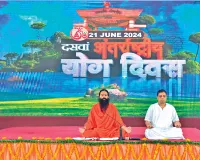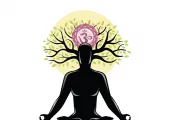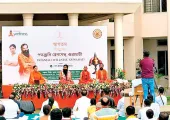Vairagya
On

Acharya Dr. Suman
Professor-Patanjali Ayurved Mahavidyalaya, Haridwar
Vairagya is the main means of purification and concentration of the mind. In this article, the focus has been on the subject of detachment by studying the dispassionate subjects mentioned in the important texts like Vedas, Upanishads, Darshana, Manusmriti, Ramayana, Mahabharata and other Manusmriti.
In the Vedas, a prayer has been made by the sages to release the Lord from the bondage, such as –
Urvarukamiv Bandhananmrityormukshiyya Mamrita', by the means of these lines it has been prayed to God that like melon or cucumber after ripening gets to be free us from the bondage of Bel-form, in the same way free us from the bondage of the world and the cycle of birth and death. Happiness is attained only by attaining God with a determined mind, not otherwise. The description of this fact is also found in the Vedas from place to place. By staying in this world created by the Supreme God, the mind should be made concentrated and strong by stopping it from going towards the objects. Because only by practicing yoga, that is, the practice of stopping the tendencies of the mind, will one get the benefit of supreme happiness, not from any greatest worldly wealth.
It is very clearly described in Yajurveda and Atharvaveda that life can be happy only by crossing this worldly river. This world is a very terrible river. The main aim of man is to cross this river. This river cannot be crossed without a boat of dispassion. Therefore, all human beings should cross this river by sitting in this boat of renunciation. There is a detailed description in the Vedas of opening the loops of the form of illusion and the loops of death.
The essence of 11 Upanishads like Ishadi is by removing ragasakti from the world leading towards liberation is the subject of Varna and the ultimate means of liberation is knowledge and dispassion. Therefore, a yogi who desires liberation should take refuge in the Upanishads. Ishopanishad, Kathopanishad, Mundakopanishad, Kenopanishad, Chandogyopanishad and Brihadaranyakapanishad specifically describe the insignificance of pleasures and the usefulness of liberation.
From the word philosophy, it is known that how much esoteric knowledge is inherent in it. Drishte anen tatvikam brahma atma veti darshanam. There are only two purposes for man's coming into this world - enjoyment and upvarga. But today people emphasize only one aspect, that is enjoyment. On the other side, towards the upper class, only some patient person gets attention. Away from the glare and hustle and bustle of the world, taking shelter of mountains, forests, caves and river banks, and experiencing the deepest knowledge and science, keeping our kindness and feeling of friendship on human beings, we are trapped in the pleasures of the world. In order to show the path of salvation, sages like Gautam, Kanad, Patanjali, Kapil, Jaimini, etc. created darshans to reach their spiritual knowledge. Yoga Darshan, Sankhya Darshan and Vedanta Darshan are mainly called Moksha Shastras. You all know the style of saying very serious things here in formulaic form. Therefore, in the same style, the dispassionate sutras of the six Indian philosophies have been considered.
Samadhi has been called yoga in Vyasbhashya and the main means of attaining this yoga or samadhi have been told to practice and dispassion. Vitrishna means detachment from the things seen and heard it is called as Vashikarsanjnak Vairagya, this is also called Aparvairagya and on attaining fame, it is called Paravairagya to become detached from the qualities of Sattva, i.e., the original nature which is the cause of this world.
Lord Rama, according to Valmiki Ramayana is considered to be the ideal of all of us even today. The biggest reason in this is that he and did not understand even a single difference in exile. Ram, who was to be coronated a few moments ago, is now being asked to make preparations to go to exile. It is difficult to find an example of a more detached life than this in the world. People explain to the one who has got exile, but here the opposite is being seen. One who is not yet for fourteen days or fourteen months, but for fourteen years, has to live in the forest among wild animals, in the food of tuber-root and in the bed of leaves and in the clothes and hut of the bark (bark). In this way Lord Ram is explaining to his parents, brothers and sisters and the people of Ayodhya. What a wonderful detachment or non-attachment feeling we get to see in this Valmiki Ramayana. Likewise, the description of the penance of many ascetics like Sita and Shabari etc. is found here. The renunciation of Sita, Lakshmana and Bharata is discussed in every house even today. He has lived the life of a forest dweller even after not getting exile. Although in the Ramayana, Mohasakti is also described in many places, but prudent and intelligent people, seeing the condition of Mohasakt Dasaratha, Bali and Ravana etc.
In the first of the Puranas, in the Shrimad Bhagwat Mahapuran, Vidur ji, Dhritarashtra, who had become blind in his son's attachment, advised him to have a dispassionate attitude to get rid of attachment, whether by his own understanding or by the understanding of others - one who considers this world to be a form of sorrow and becomes detached from it. And having subdued his conscience, imbibing the Lord in his heart, leaves the house for sannyas, he is the best man.
Only in Shrimad Bhagwat Mahapuran, many dispassionate dialogues are filled. Like Prahlad-Hiranyakashipu dialogue, dialogue between King Yayati and his wife Devyani, dialogue between Lord Sri Krishna and Uddhava, etc.
In the Brahmapuran, it has been advised by Brahma ji to keep away from the desires of human beings while being conscious-
This world is full of great, vain, sorrowful froth. Angry planets (crocodile) are full here. This terrifying theme is filled with passionate waters. It is so tormented by many disease-waves, so frightening that it cannot be crossed. This is bad.
There is also a very beautiful description about Vairagya in Lingamahapuran. There is only one remedy for the people who are poisoned in the world - of nectar. Equal knowledge and attention. Other than that there is no other solution
is knowledge arises out of religion. Dispassion arises out of knowledge. Out of dispassion arises the supreme knowledge, which is the manifester of the Supreme. Only with knowledge and dispassion one attains yogic-siddhi. One who follows Sattva guna is liberated from yogic accomplishment, otherwise not. In the Shrimarkandeya Purana, the writing of a letter by Mother Madalsa to her son that the company of saints is the medicine of the world, shows detachment. There is a very beautiful description of Vairagya in Brihannardiya Purana also. In Shri Vishnu Puran, Shri Parashara has given very succinct dispassionate teachings to the sages.
In Vairagyasatakam, Bhartrihari writes very beautifully about detachment - 'Sarvam object bhayanvitam bhuvi nrunam vairagyamevabhayam' world. Everything is fearful in me, the only dispassion is such that provides blessings.
Tags: patanjali patanjali wellness yog sandesh education india bharat university of patanjali bharat swabhiman patanjali yog samiti swami ramdev ji maharaj patanjali gurukulam acharyakulam patanjali research institute Acharya balkrishna patanjali yogpeeth patanjali yog sandfdesh yog gram yog guru haridwar devbhumi mahila patanjali yog samiti patanjali ayurvedic hospital Vairagya mortification
लेखक
Related Posts
Latest News
01 Nov 2024 17:59:04
जीवन सूत्र (1) जीवन का निचोड़/निष्कर्ष- जब भी बड़ों के पास बैठते हैं तो जीवन के सार तत्त्व की बात...



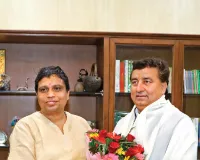
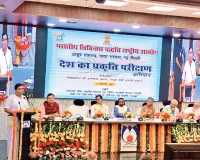
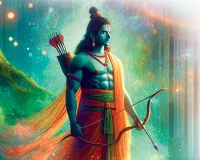


.jpg)

